3 Common Mistakes With Fast Break Drills and How To Fix Them!
As I've been analyzing some of the fast break drills that I use, I went back to the article 4 Traits Of Highly Effective Basketball Drills by Nate Sanderson.
Here's a quick overview...However, I still recommend that you read the article for a comprehensive explanation of each component to get a clearer understanding.
Question 1: Does the drill have a SPECIFIC PURPOSE? Coaches should know exactly WHY they use each drill in their practice plan.
Question 2: How effectively does the drill address your purpose? Does the drill simulate the EXACT SAME situation as it occurs in a game?
Question 3: Is the drill efficient? Productivity and activity are not the same thing.
Question 4: Does the level of difficulty match the player's ability level? Drill constraints should produce a 50-60% success rate.
After referencing those questions, I quickly realized that there are a lot of issues with many of the fast break drills out there...even many we posted on our website over the last 14 years.
Here are some common problems I found and how to fix them...
#1 - Offense Maintains an Advantage for Too Long
With many fast break drills, if you don't modify the drill, you could have a 2v1 or 3v2 situation for 15 seconds. But in most game situations, you only have this advantage for a few seconds if that.
So your players need to learn how to score quickly.
To fix this, you could set a pass limit or even a time limit on each possession.
But one of the best ways to do this is to use trailing defenders in the drill. Here's an example in the drill below.
#2 - Players Start From the Same Static Position on Every Possession
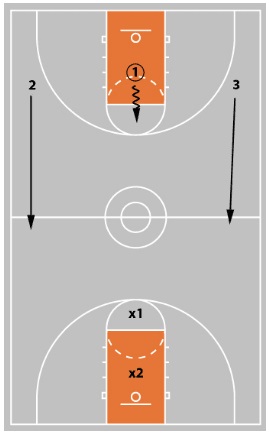
With your traditional 3v2, 2v1 fast break drill, defensive players tend to start from the same, static position each time.
Many times, you start with one defender under the basket and one defender at the top of the key.
But during a game, it tends to be more chaotic and random!
Defenders are usually recovering with a sprint and turn or a backpedal.
They tend to arrive from different angles and positions on the court.
The defenders also get there at different times.
These same issues apply to offensive players as well...
How can we expect our offensive players to score if we're not truly replicating how the defense will act during a real game?
And how can the defense learn techniques to stop the offense if they never simulate a defensive recovery in game-like situations?
With the following drill, you can move the cones. You can also have offensive and defensive players start from different lines. This will create different timing, positions, and recovery angles to simulate a game.
#3 - Inefficiency Leads To Fewer Reps and Restricts Player Development
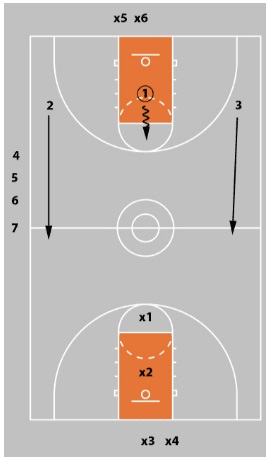
If it's a 7-player drill and you have 14 players in the drill rotation, this can lead to a reduction in repetitions and efficiency. You might have a lot of players standing around while they wait for their turn.
And many times within these drills, you have to stop and reset after one to three trips down the floor. You have to go back to the new position, change defenders, change offense, or start a new group.
It's better to have continuity within the drill, so it never stops and you can maximize your time and repetitions.
You might be thinking...well, if they never stop, they're going to get really, really tired and sloppy.
You do have to experiment and find that right balance.
A well-seasoned coach will give them rest and recovery in a different way. They will stop the play in order to teach.
That way, you're super efficient. You maximize reps, teaching time, and rest and recovery.
And as the season progresses, you can gradually reduce the amount of "teaching stops" in order to better condition your players.
Here's a great way to get some continuity:
You can simply play 3v2 to 2v3.
You will have two players on one team.
You will have three players on another team.
If the team of three players starts on offense, the other team of two players starts on defense.
After a change of possession, the team of two defenders transition to offense and the team of three offensive players transition to defense.
You can rotate offensive and defensive players every couple of minutes or after X amount of trips.
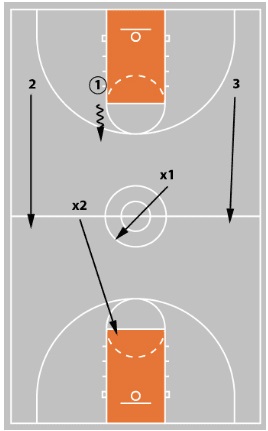
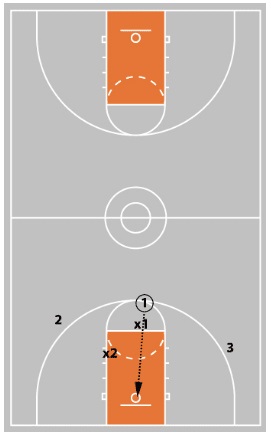
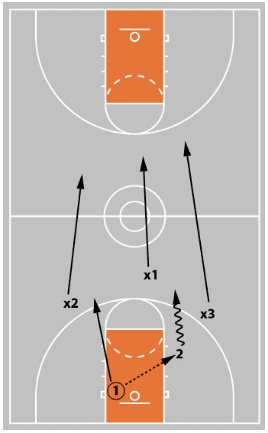
You can also play 4v3 to 3v4 or 5v4 to 4v5.
Like recommended above, you might limit each possession based on time or passes to ensure decisions are being made quickly.
Resources for Fast Break and Game-Based Drills
Transition Offense and the Four-Second Fast Break with Don Kelbick
50+ Game-Based Drills with Nate Sanderson
What do you think? Let us know by leaving your comments, suggestions, and questions...
|
|||


 Facebook (145k Followers)
Facebook (145k Followers) YouTube (152k Subscribers)
YouTube (152k Subscribers) Twitter (33k Followers)
Twitter (33k Followers) Q&A Forum
Q&A Forum Podcasts
Podcasts